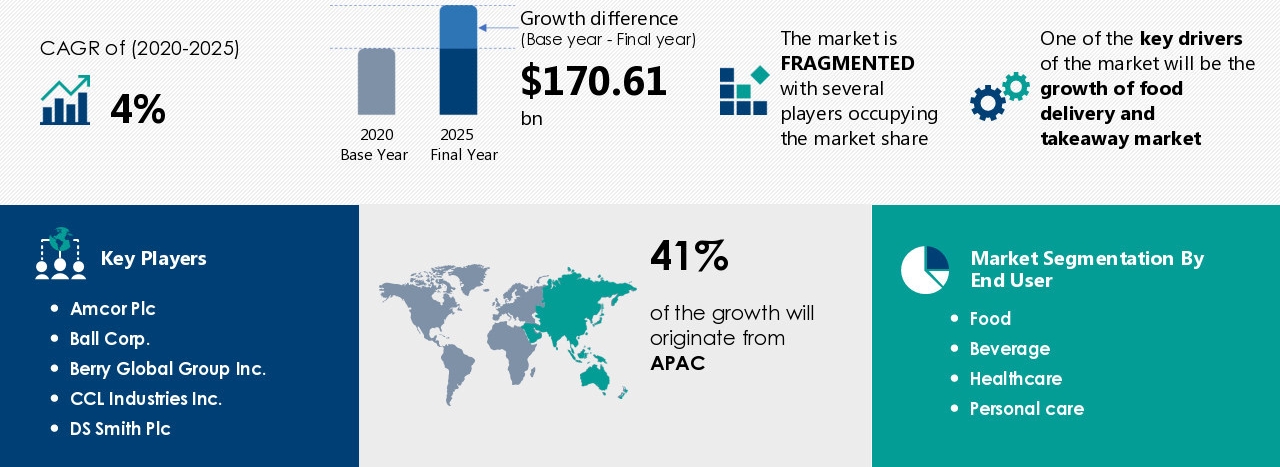อุตสาหกรรมบรรจุภัณฑ์ได้กลับมาฟื้นตัวท่ามกลางการระบาดของเชื้อโคโรนาไวรัส ตามรายงานของ TechNavio มีการคาดการณ์ว่าตลาดบรรจุภัณฑ์ทั่วโลกคาดว่าจะเติบโตถึง 170.61 พันล้านเหรียญสหรัฐจากปี 2021 ถึงปี 2025 โดยมีอัตราเติบโตเฉลี่ยต่อปีที่ 4% ในช่วงระยะเวลาคาดการณ์ดังกล่าว นอกจากนี้การเติบโตของตลาดถึง 41% จะมาจากภูมิภาค APAC โดยมีจีนและอินเดียเป็นตลาดสำคัญ อย่างไรก็ตามพบว่าพฤติกรรมการซื้อและลำดับความสำคัญของผู้บริโภคได้รับอิทธิพลจากเทรนด์การบริโภค สิ่งนี้เองจะส่วนผสมที่สำคัญในอุตสาหกรรมบรรจุภัณฑ์สำหรับผู้บริโภคในอนาคต
PACKAGING IN A NUTSHELL
บรรจุภัณฑ์สินค้าผลิตภัณฑ์ประกอบด้วยวัสดุหลายชั้น แบ่งได้เป็น ชั้นบรรจุภัณฑ์หลัก ชั้นบรรจุภัณฑ์รอง และชั้นบรรจุภัณฑ์ตติยภูมิ โดยชั้นบรรจุภัณฑ์จะห่อหุ้ม คงรักษา และปกป้องและสัมผัสสินค้าโดยตรง บรรจุภัณฑ์รองเพิ่มการป้องกันและส่งเสริมตลาดของสินค้า ในขณะที่บรรจุภัณฑ์ตติยภูมิมีขนาดและอำนวยความสะดวกในการขนส่ง
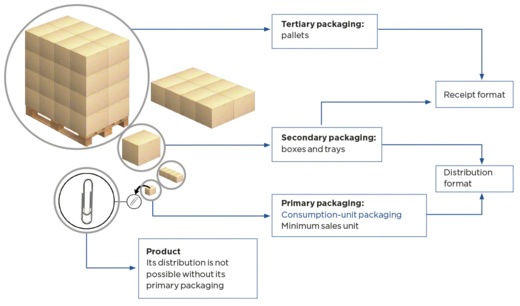
Source: Packaging types in logistics. Interlake Mecalux
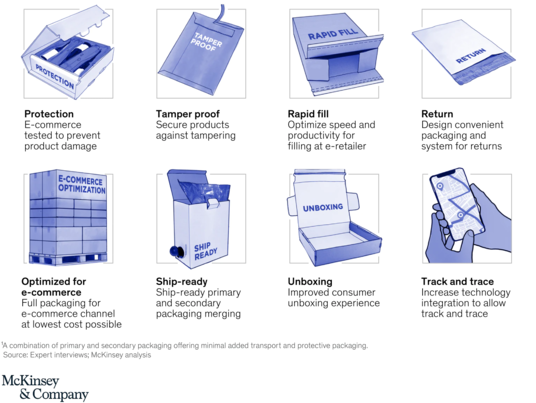
Source: Beyond COVID-19: The next normal for packaging design, McKinsey & Company
THE YOUNGER
นับวันผู้บริโภคก็ยิ่งเรียกร้องความรับผิดชอบในประเด็นที่เกี่ยวกับสุขภาพและสิ่งแวดล้อมจากบริษัทผู้ผลิตมากขึ้น ทั้งให้ลดการปล่อยคาร์บอนและลดความสูญเสียจากบรรจุภัณฑ์ การสำรวจผู้บริโภคล่าสุดของ PwC สะท้อนเสียงของผู้บริโภคส่วนใหญ่ที่ยินดีจ่ายส่วนต่างราคาซื้อสินค้าที่ผลิตโดยยึดหลักจริยธรรมและความยั่งยืน ซึ่งผู้ผลิตในอุตสาหกรรมก็ได้ตอบรับเทรนด์การบริโภคนี้เป็นอย่างดี
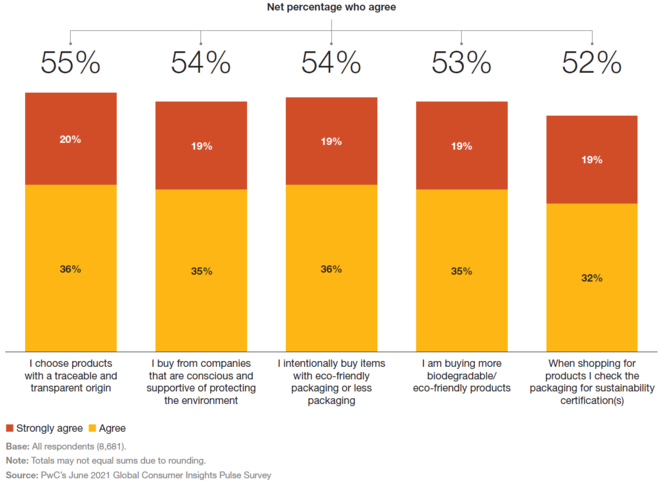
Source: 2021 Global Consumer Insights Pulse Survey, PwC
เมื่อเทียบกับกลุ่มคนรุ่นต่างๆ พบว่ามิลเลนเนียลเป็นกลุ่มที่เป็นมิตรกับสิ่งแวดล้อมและมีพฤติกรรมที่อ่อนไหวต่อสิ่งแวดล้อมมากขึ้น ผลการสำรวจของ PwC พบว่ากลุ่มมิลเลนเนียลที่มีอายุมากกว่า 33-36 จะเลือกซื้อผลิตภัณฑ์ที่ต้นกำเนิดสามารถตรวจสอบได้และและมีความโปร่งใส ในทำนองเดียวกัน กลุ่มมิลเลนเนียลที่มีอายุ 27-32 ปี จะเลือกซื้อจากผู้ผลิตที่ใส่ใจสิ่งแวดล้อม
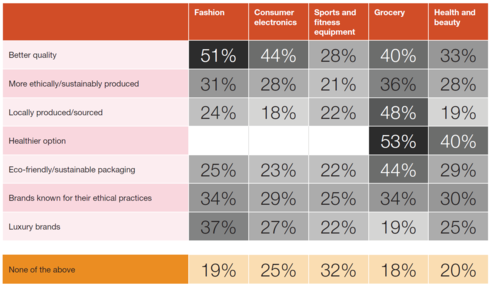
Source: 2021 Global Consumer Insights Pulse Survey, PwC
THE EVITABLE TREND
แรงกดดันให้ลดขยะบรรจุภัณฑ์ได้ก่อตัวขึ้นอย่างล้นหลามท่ามกลางการร่วมตัวเรียกร้องจากผู้บริโภคทั่วโลก ในขณะเดียวกัน หน่วยงานซึ่งมีหน้าที่กำกับดูแลได้รับรู้และกำลังจัดการกับประเด็นดังกล่าว ทำให้หลายประเทศกำลังพยายามออกแบบและสร้างกฎระเบียบข้อบังคับว่าด้วยบรรจุภัณฑ์แบบยั่งยืนแม้ว่ากฎระเบียบข้อบังคับดังกล่าวนี้จะมีความแตกต่างเหลื่อมล้ำกันอยู่บ้างก็ตาม
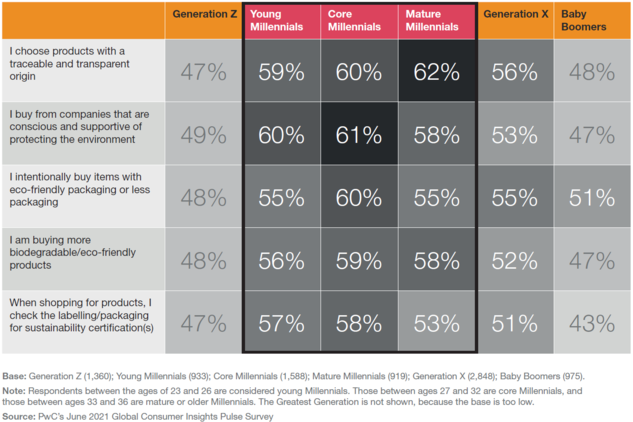
Source: 2021 Global Consumer Insights Pulse Survey, PwC
TOWARD SUSTAINABLE PACKAGING FUTURE
บรรจุภัณฑ์มีบทบาทสำคัญในการปกป้องสินค้า ถนอมอาหาร และอำนวยความสะดวกให้กับไลฟ์สไตล์สมัยใหม่ คาดว่าตลาดบรรจุภัณฑ์ทั่วโลกจะสูงถึง 170.61 พันล้าน เหรียญสหรัฐในปี 2025 ขับเคลื่อนโดยปัจจัย เช่น การขยายตัวของชุมชนเมืองอย่างรวดเร็ว ความนิยมที่เพิ่มของอีคอมเมิร์ซ และการขยายตัวของชนชั้นกลางในประเทศกำลังพัฒนา อย่างไรก็ดี การสอดส่องของรัฐบาลและการตระหนักของผู้บริโภค ของผลกระทบต่อสิ่งแวดล้อมและความยั่งยืน อุตสาหกรรมบรรจุภัณฑ์จะต้องคิดใหม่ทำใหม่เพื่อสนองเสียงเรียกร้องจากสังคม
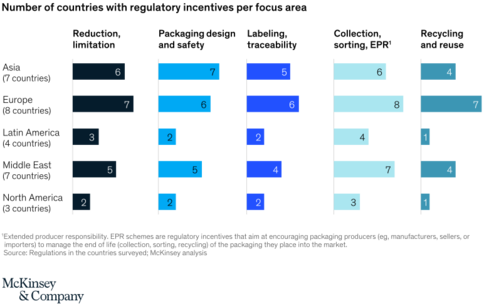
Source: Sustainability in packaging, Global regulatory development across 30 countries, PwC
ในขณะที่ผู้บริโภคและแบรนด์จากทุกมุมโลกหันมาให้ความสนใจกับกระบวนการที่ยั่งยืนและเป็นมิตรกับสิ่งแวดล้อม ความยั่งยืนได้เปลี่ยนจาก “สิ่งที่ควรมี” เป็น “สิ่งที่ต้องมี” ดูเหมือนจะเกิดวิวัฒนาการในอุตสาหกรรมบรรจุภัณฑ์ จากเดิมที่ใช้แนวคิดการจัดการวัสดุที่ยั่งยืน (SMM) โดยมุ่งเน้นการใช้วัสดุเบาและมีประสิทธิภาพ ไปสู่แนวทาง “เศรษฐกิจหมุนเวียน” ซึ่งการรีไซเคิล การนำกลับมาใช้ใหม่ การสรรหาวัตถุดิบ และส่วนประกอบวัสดุศาสตร์ เป็นปัจจัยที่ร่วมขับเคลื่อนการออกแบบบรรจุภัณฑ์ในอนาคต
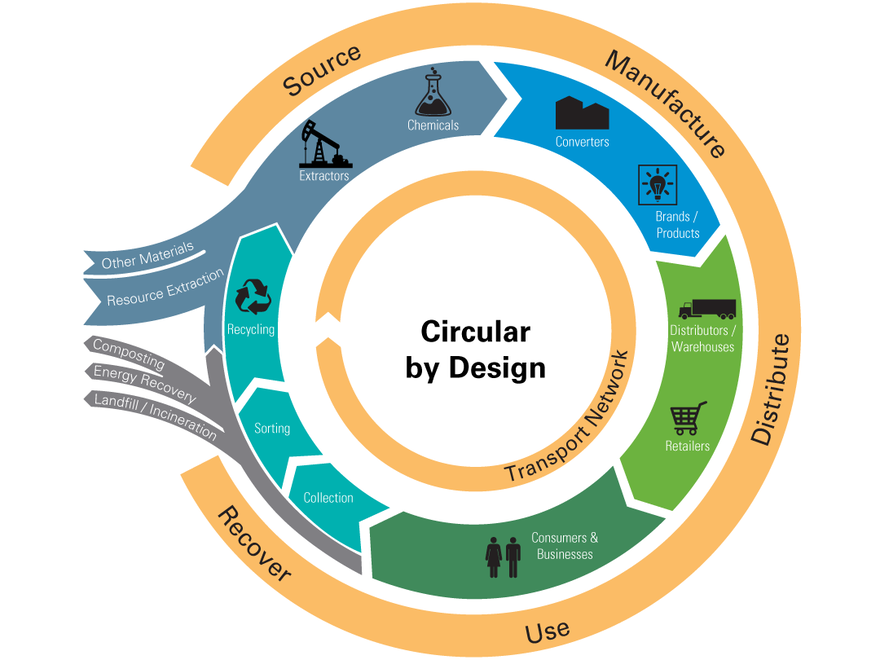
Source: Packaging in the circular economy
Article by: Asst. Prof. Suwan Juntiwasarakij, Ph.D., Senior Editor and MEGA Tech

